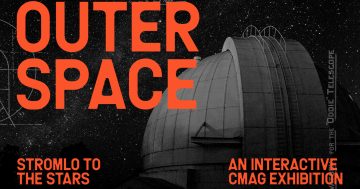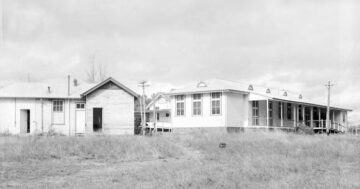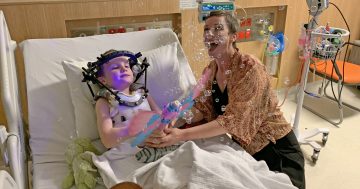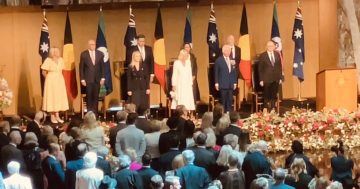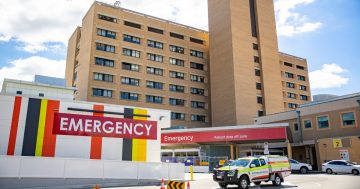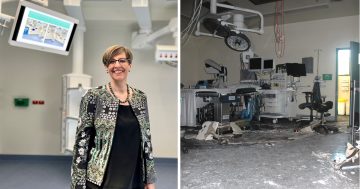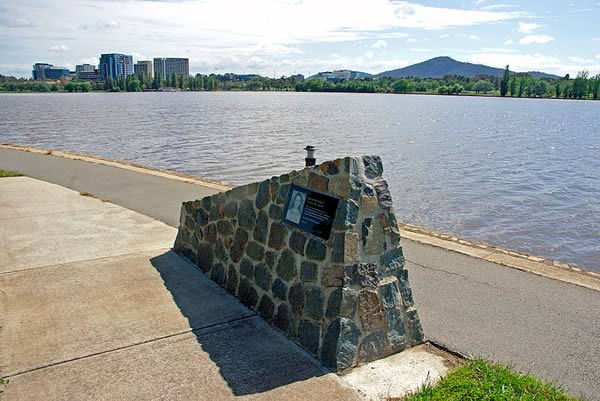
The botched demolition of the Royal Canberra Hospital in 1997 is memorialised by the tragic death of 12-year-old Katie Bender, an innocent bystander who attended the event with her family.
The Bender family was part of an estimated 100,000 people who crammed around the lakeshore to view the hospital implosion, which had been vigorously promoted by the ACT Government under Chief Minister Kate Carnell and her cabinet colleagues, including her deputy Gary Humphries.
But the mismanaged demolition has so badly handled that many hundreds of people could have been killed and maimed. As it was nine other people sustained serious injuries and spinning shrapnel in chunks up to 12 kg whirled up to 650 metres, smashing into boats and cars and whistling through the treetops.
It is now 17 years since that Sunday afternoon (13 July 1997) and a lakeside memorial serves to remind us of the personal tragedy for Katie and her family and friends.
But there is no memorial to the undemocratic master strokes that led to the destruction of the historic Royal Canberra Hospital and the loss of the city’s central public hospital, sited adjacent to the Australian National University and perfect for a research or training centre. Instead we have the towering mass of Woden Valley Hospital, crammed onto a small unsightly block and forced into ever-growing upwards expansion.
Nor was there any public consultation before handing the picturesque Acton Peninsula to the Federal Government of John Howard as home for the new National Museum of Australia. In exchange, Canberra people received the largely toxic Kingston shoreline of Lake Burley Griffin.
The promise of a bustling promenade of cafeterias, restaurants and lakeside entertainment just never happened. Instead, it was just one more land grab that created an expensive enclave of high rise, glass and steel. It was money for the ACT Government and profits for investors.
The Carnell Government came in for severe criticism for its handling of the hospital implosion. The subsequent Coronial inquiry revealed the full extent of the appalling mismanagement and recommended laying criminal charges, but these never eventuated.
Coroner Shane Madden cleared Carnell (as Chief Minister) of any personal responsibility but he said in his report that the Carnell Government had turned the implosion into a public circus – and this had the approval of the Chief Minister. The Government had been cavalier in its attitude to safety; “…the evidence on this topic leads me to conclude that Carnell was poorly briefed and advised on this subject matter”. He said safety was, “sacrificed in the interests of speed and expediency”.
Canberra people had no voice in the destruction of their much loved hospital or the secretive way the whole affair was conducted. The decision to “bomb” the hospital and to prevent the building being preserved for other uses was made by the Canberra Liberal Party and its political staffers.
Other key players in the hospital fiasco are various ACT senior public servants, who appear to have a special talent for consistently fouling up the administration of Canberra and failed and bungled projects stretching all the way back to self-government in 1989.
Yet the central players in the whole affair have all gone on to successful careers inside and outside politics.
Carnell is CEO of the Australian Chamber of Commerce and Industry, having held a series of high profile CEO jobs, since she resigned in October 2000 over the Bruce Stadium debacle.
Gary Humphries became ACT Chief Minister and went on the take the Liberal’s Senate seat, a role he had always coveted.
The main senior Liberal staff member who was central to the land swap of Acton Peninsula for the Kingston Foreshore, Gary Dawson, is now the CEO of the Australian Food and Grocery Council, a position previously held by Kate Carnell.
It appears to be an injustice that a young girl with all the bright hopes of her life before her should die in such a storm of mismanagement and self-interest. And yet no-one was found to be responsible.
(Photo By Bidgee (Own work) [CC-BY-SA-2.5-au (http://creativecommons.org/licenses/by-sa/2.5/au/deed.en)], via Wikimedia Commons)











